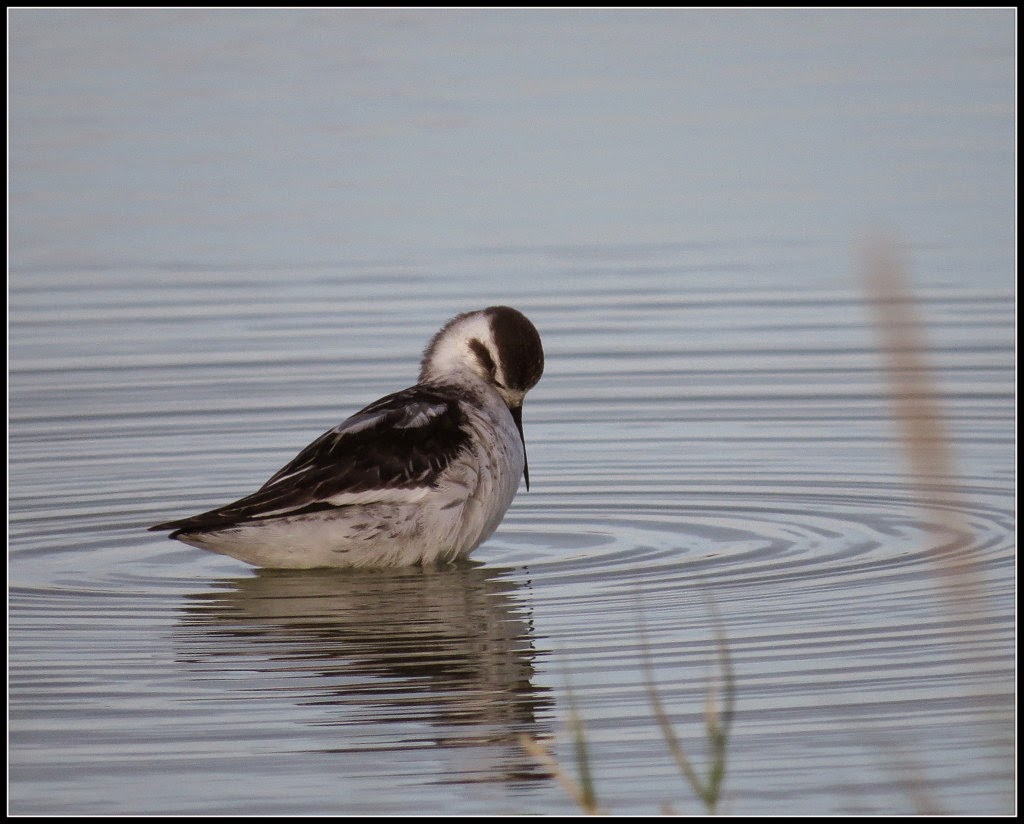Oh Happy Days! I'm back on the field getting used to my old camera all over again and what better way to get some practice down with a lifer bird for me! It doesn't get any better than this.
We arrived at the southernmost part of Fort Myers Beach and I gathered up my gear with a big dose of hope to find a reported rare specie at that location.
 |
| From the top of the bridge I could see those two starfish leaving their leg prints behind as they headed back to the gulf. |
 |
| The anticipation is building up and it is with great enjoyment that I would like to introduce to you.....the Red-Necked Phalarope (#245) |
 |
| I had seen countless photos and read many statements about this bird making an appearance in Sarasota. I often thought of driving up there, yet I could not justify driving 4 hours to see one bird. Lucky for me, it made an appearance in my county - how thrilled I was when this opportunity to see it presented itself - again. |
 |
| The Red-Necked Phalarope is a small wader (7-3/4") (smaller than a Least Tern by 2"). It breeds in arctic regions of North America and Eurasia. It is migratory, and, usually for a wader, winters at sea on tropical oceans. |
 |
| To see this bird here is quite unusual and a rare sighting - so I'm delighted to have been able to watch it as it fed on insects. |
 |
| This bird did not sit still....forward, to the side and in circles.....on and on it went. The best way to describe this little fellow would be to say that he might be suffering from the result of having recently ingested a great dose of caffeine laced with sugar. |
 |
| It was seen catching insects flying above the water surface, at one point it caught a bee and spit it out, probably not liking its bite. |
 |
| The pond was rather quiet this morning, beside the Red-Necked Phalarope a Great Blue Heron and a Tricolored Heron were present. |
 |
| On the human side - some of us got on our knees in order to get a better bird-eye's view. (Hi Bob!). In the photo you can see the Red-necked Phalarope which was pretty close to the edge and the Great Blue Heron on the far edge. |
 |
| At one point the Red-necked Phalarope took maybe 60 seconds at the most to stop and to clean up its feathers. |
 |
| Well, folks, all good things eventually must come to an end..... |
 |
| and keep in mind that you'll never know where I'll turn up next. |

















It looks like you and your little friend have nicely been reunited by the looks of your pictures. What a beautiful bird. The picture of the heron always makes me think of my dad ��
ReplyDeleteA terrific find (the Phalarope; not Bob!). This spot is one of my favorites to bird. Great photography as well.
ReplyDeleteIt was a happy morning indeed, France. Since the Siesta Key Beach Red-necked Phalarope remained in the tidal pool for so long, I was very confident that Marie Grayson's phalarope would stay at least overnight at the Carlos Pointe tidal pool at Big Carlos Pass. Based on the behavior of the two birds, I am certain that they are not same one. My thanks to Hemant for notifying me of the Fort Myers Beach phalarope via Vince McGrath's popularization of Marie's find. Our local bird was extremely active in its feeding as you note. I believe the phalarope did not eat the bee due to its much larger size than the other prey it was consuming. I did not get the shot of the takedown of the bee as I had hoped.
ReplyDeleteWow, beautiful photographs!
ReplyDelete